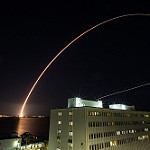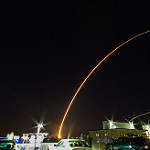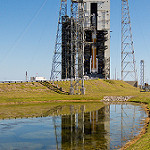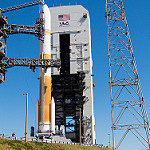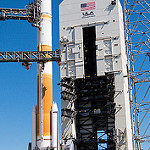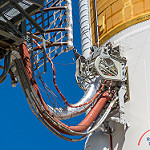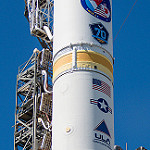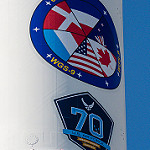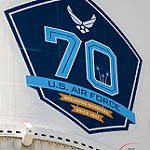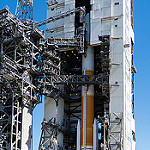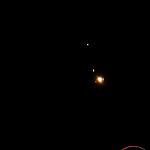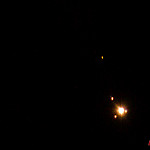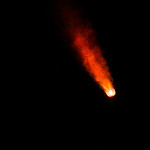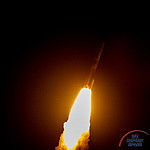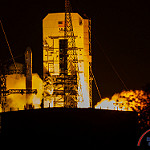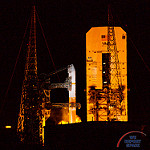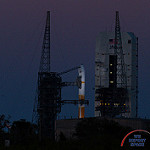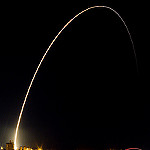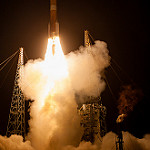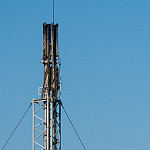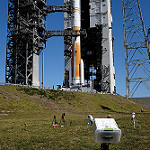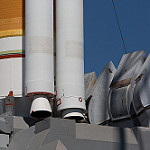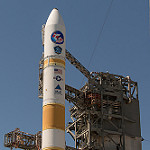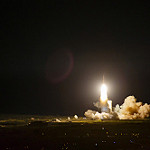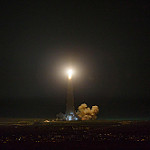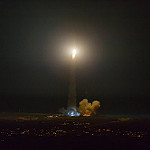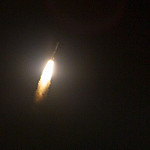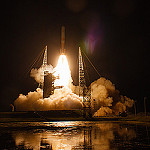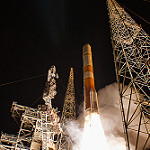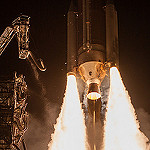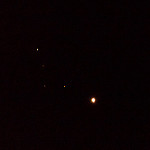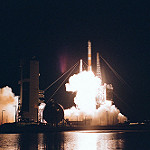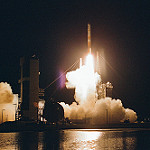Breaking Barriers: The launch of WGS-9
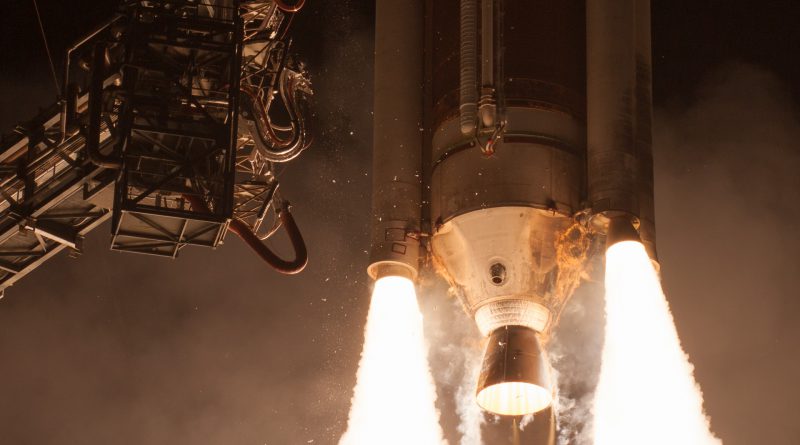
"There's no such thing as 'just another launch', but this launch [WGS-9] has extra significance for us here, it's one of the events we have decided, in the Air Force, we are using to help celebrate the Air Force's 70th anniversary." – Major General David Thompson, Vice Commander of Air Force Space Command, March 18, 2017.
Breaking Barriers
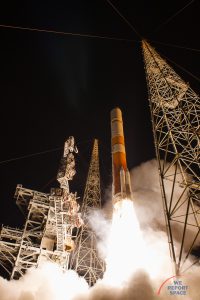
September 2017 marks the 70th anniversary of the establishment of the US Air Force as a separate service, outgrowing from the US Army Air Corps following the end of World War II. As General Thompson pointed out yesterday evening, it was just one year after the formation of the Air Force that Chuck Yeager, flying the Bell X-1 aircraft as an Air Force test pilot, broke the sound barrier. In recognition the Air Force's history of both literal and figurative barrier-breaking, the US Air Force has adopted "Breaking Barriers" as their theme for this year-long anniversary.
Thirty four minutes after liftoff, the WGS-9 spacecraft separated from the second stage of the Delta IV launch vehicle, marking the moment at which the Air Force declared the launch successful. Shortly after this, Major General David Thompson addressed members of the media to talk about the mission, the Air Force's upcoming anniversary, and the role which the 45th Space Wing plays in supporting launch operations and the Air Force as a whole.
Major General Thompson's remarks to the media highlighted other past instances of the US Air Force Breaking Barriers as well. Speaking to an assembled group of reporters and photographers on the grounds of Cape Canaveral Air Force Station, he remarked,
"Right here in 1950, the United States Air Force and the United States started breaking the barrier of space. A launch in 1950 called Bumper was the first launch from Cape Canaveral. Ever since then, the Air Force and our nation and later our partner NASA have been breaking barriers and advancing the frontier of space.
"John Glenn flew into orbit on top of an Air Force Atlas rocket. Every Mercury astronaut flew on top of an Air Force Atlas rocket. Gemini astronauts flew on top of an Air Force Titan II rocket. We've been working in space since then break barriers and advancing.
"That's the spirit of innovation that is the United States Air Force."
Major General Thompson also called attention to Air Force Space Command's 35th anniversary, and highlighted one of AFPSC's programs which benefits millions of Americans every day: the Global Positioning Service (GPS) satellite system.
"We also fly the nation's GPS Satelites. Air Force Space Command builds, flies, and operates the GPS constellation. Ask yourself how many times in the past week, you typed in on your iPhone, where am I now?"
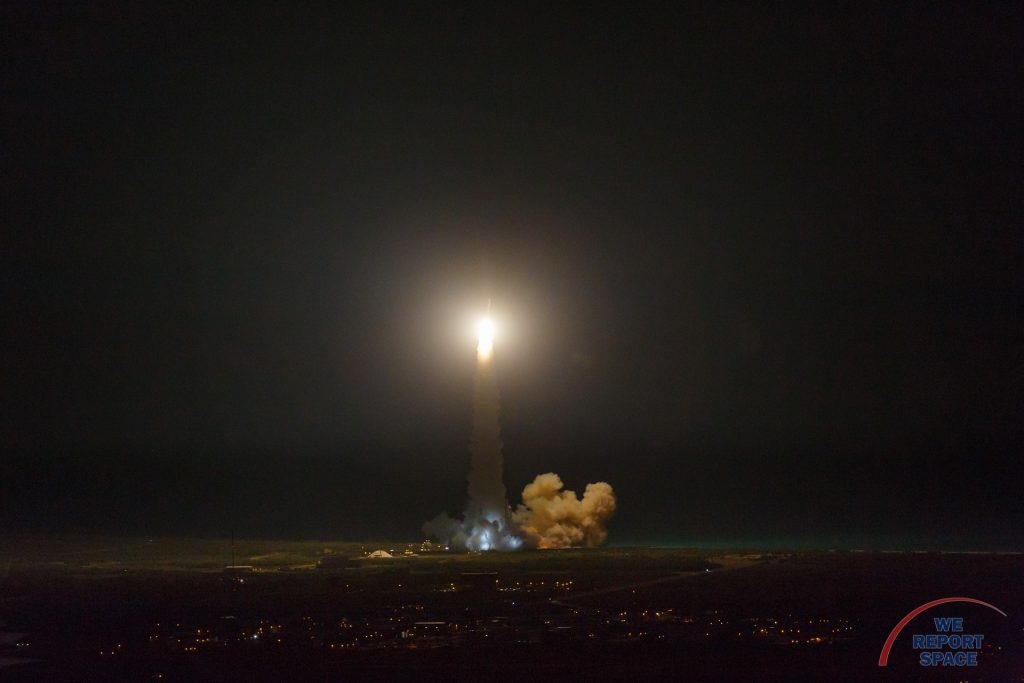
Increased Capacity
The WGS-9 launch delivered the ninth satellite of the WGS constellation to a supersynchronous transfer orbit, one which will take roughly 70 days for the satellite to circularize and finalize. This satellite was the third built under Boeing's $182 million Block II follow-on contract, which includes provisions for up to three additional Wideband Global SATCOM satellites after this one.
Each individual satellite in the WGS constellation is capable of carrying a higher capacity of wide band (X- and Ka-band) communications than the entire Defense Satellite Communications System it supplements.
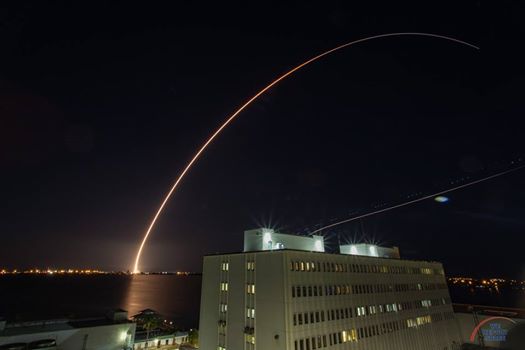
Global Partnership
WGS-9's mission artwork depicts the flags of the member nations which have jointly developed and share operational access to the Wideband Global SATCOM system; Australia, Canada, Denmark, Luxembourg, The Netherlands, New Zealand and the United States. The US Department of Defense works in cooperation with these member nations to support allied military communications around the globe.
The Australians, the Canadians, the nation of Luxembourg, the Netherlands, Denmark, and New Zealand. Those nations contributed enough to this program to basically pay for the satellite that you saw launched tonight. They get to use the satellite constellation. – Major General David Thompson
Delayed, but not Late
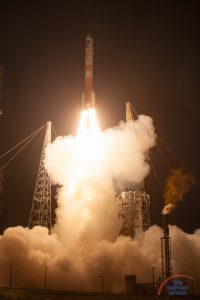
Last night's mission (and every Delta IV launch) includes a built-in 30 minute hold which extends to just 4 minutes before liftoff. This allows the launch team to catch up on and work any outstanding issues without having to miss a targeted launch window. Seven minutes before launch, the team will conduct their "go/no-go" poll and determine if they are ready to resume countdown.
The Delta IV launch team received permission from the mission director to resume the countdown at approximately 7:38pm. Just prior to the clock running, an alarm on the launchpad swing arm system led to the launch team extending the hold so that engineers could investigate the issue.
"One sensor, when retracting the pins that allow the gantry to move back, demonstrated an anomaly. We ran through it, made sure we understood what the anomaly was, pulled the pins again, and the anomaly did not recreate itself, so that suggested to us we were absolutely safe to launch." – Brigadier General Wayne Monteith, 45th Space Wing
Once this issue was cleared, the launch vehicle was once more granted permission to launch, with a new T-0 (liftoff) time of 8:18pm EDT, still within the WGS-9 launch window of 7:44 - 8:59PM. The only negative consequence of this delay was for launch photographers; expecting a sunset launch, the WGS-9 mission would now lift off in the dark.
A Busy Schedule in Florida
March 18's WGS-9 launch was the second in a string of four launches planned to launch from Cape Canaveral Air Force Station and Kennedy Space Center this month. Just 66 hours prior to this Delta IV launch, SpaceX's Falcon 9 lifted off from Kennedy Space Center's Launch Complex 39A, carrying an EchoStar satellite to orbit.
With WGS-9 safely on its journey to space, ULA will next launch an Atlas V rocket carrying Orbital ATK's pressurized cargo module to the International Space Station, with additional supplies, experiments and consumables for the astronauts living and working in orbit. This mission is scheduled to lift off between 9 - 9:30pm EDT on March 24. Finally, SpaceX has communicated their intent to fly the SES-10 mission no earlier than March 27, notable because this will be the first re-use of a landed Falcon 9 first stage booster.

Photos

Stunning, full color photo book covering every east coast launch spanning 2014-2015, including the first-ever powered landing of a SpaceX Falcon 9 rocket.
More Info